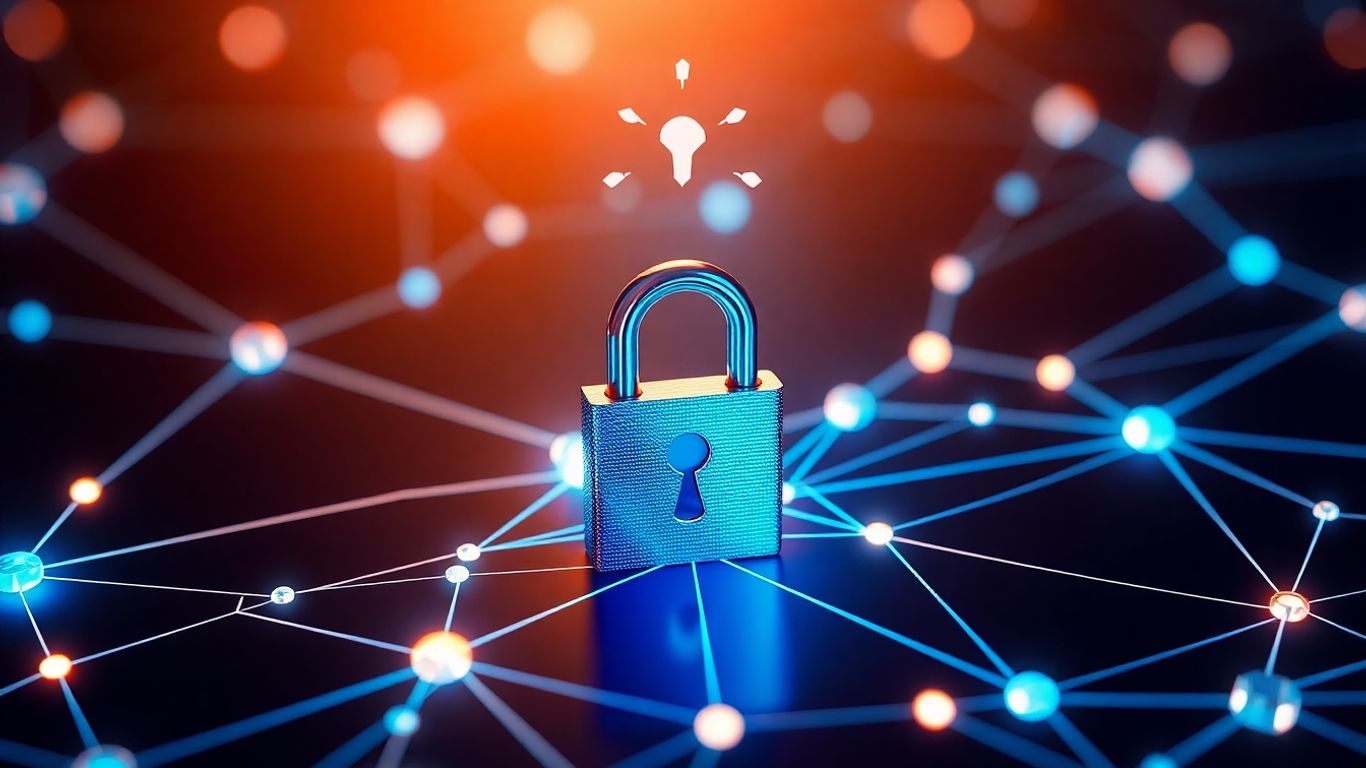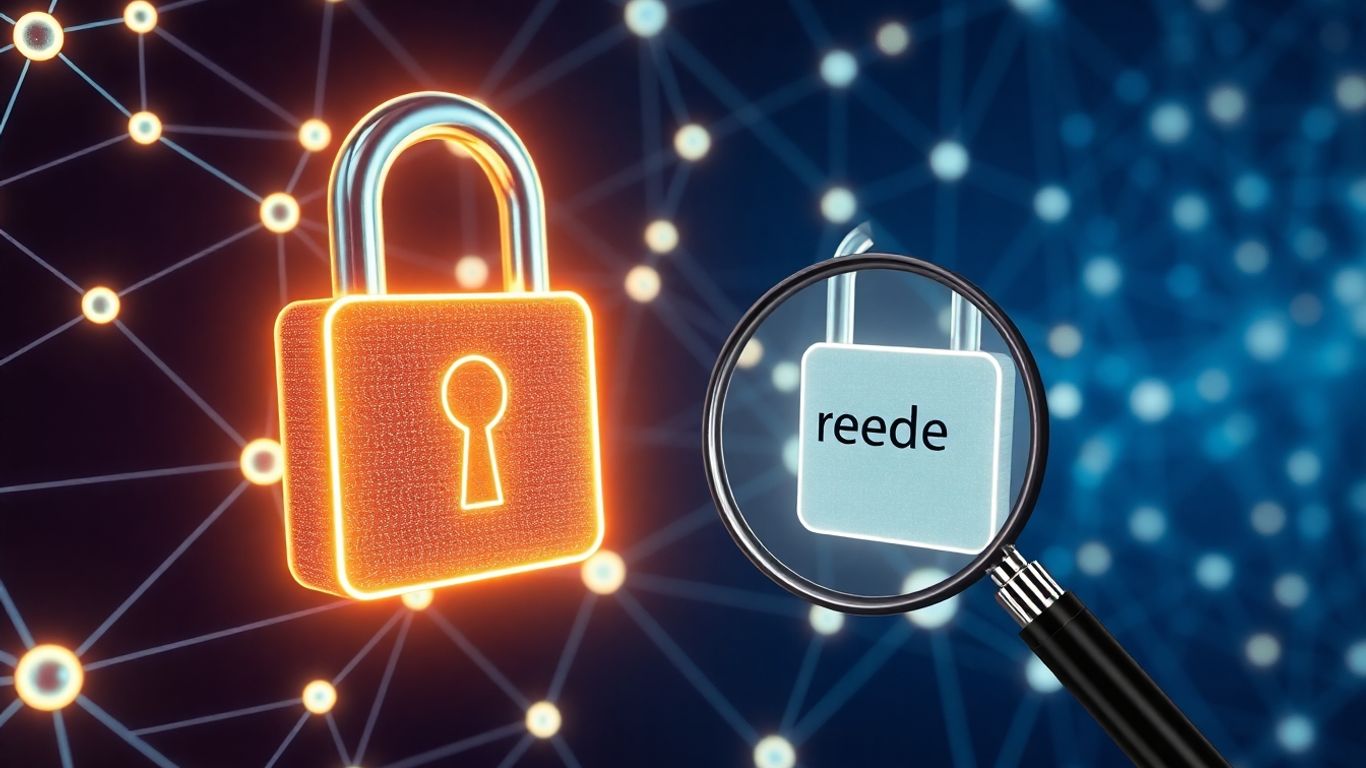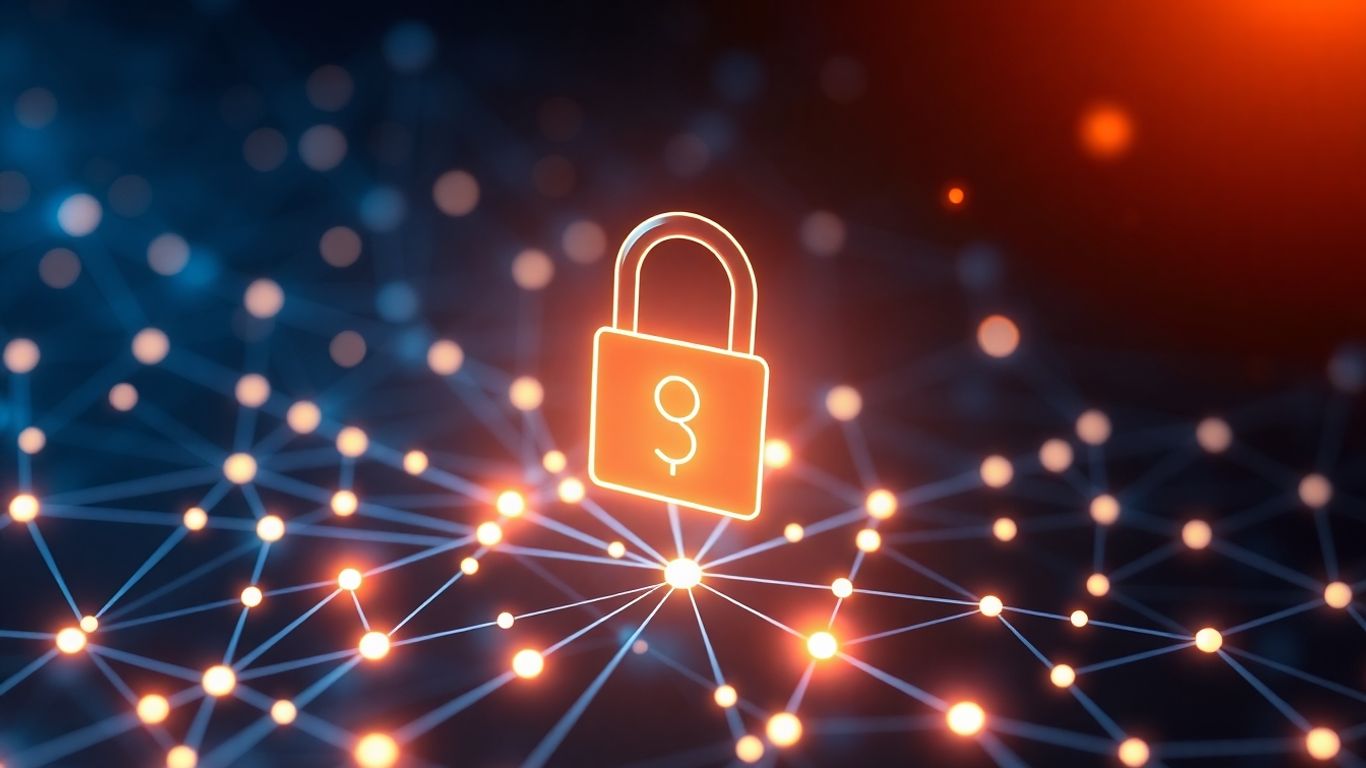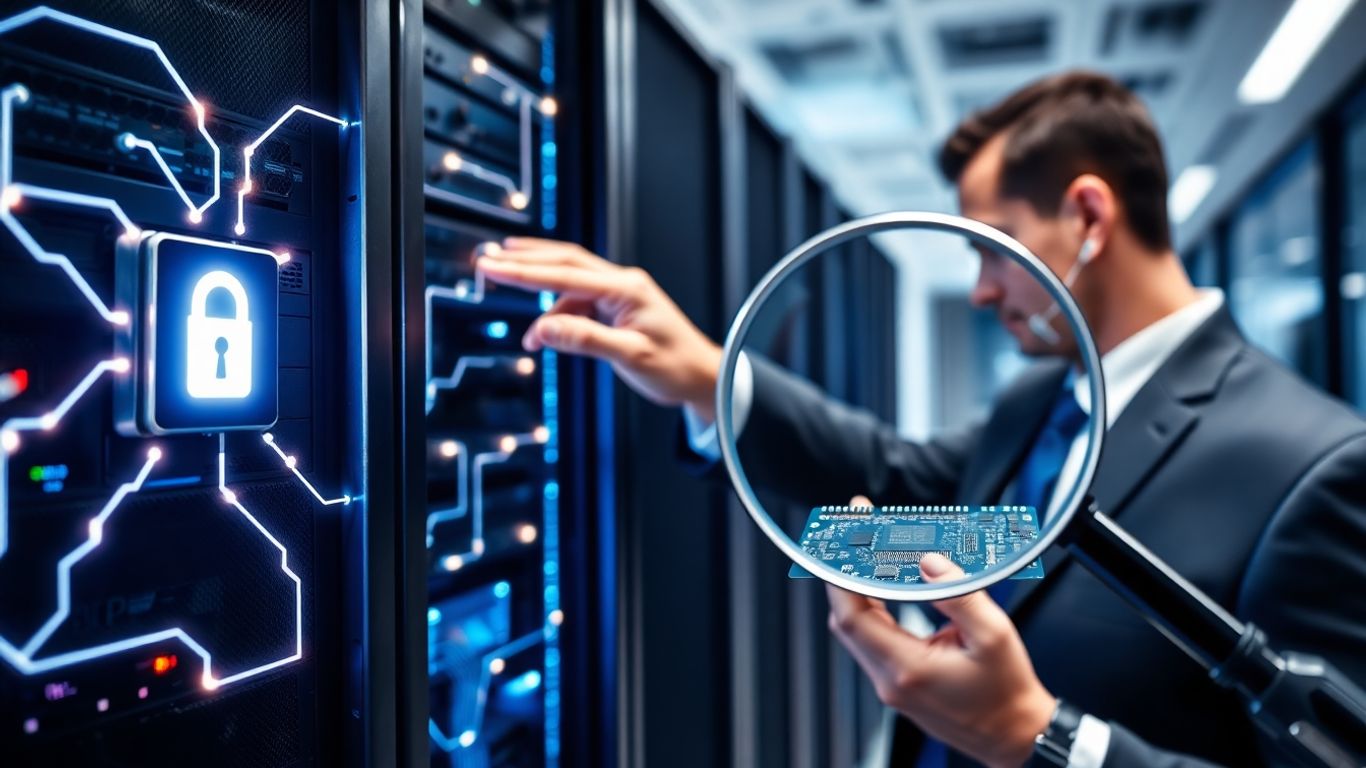[ newsletter ]
Stay ahead of Web3 threats—subscribe to our newsletter for the latest in blockchain security insights and updates.
Thank you! Your submission has been received!
Oops! Something went wrong. Please try again.
Demystify crypto: Learn what is a contract address in crypto, how it differs from a wallet address, and why it's crucial for verifying smart contracts and preventing fraud.





Ever looked at a crypto transaction and seen a long string of letters and numbers that doesn't look like a regular wallet address? That's likely a contract address. In the world of crypto, these addresses are super important, especially when dealing with smart contracts and tokens. This article aims to clear up what a contract address is in crypto, how it differs from other addresses, and why knowing it matters for your digital assets.

Alright, let's talk about contract addresses. If you've spent any time in the crypto world, you've probably seen these long, jumbled strings of letters and numbers. They look a bit like wallet addresses, but they're actually something different, and understanding that difference is pretty important.
Think of a smart contract as a digital agreement written in code. Instead of a lawyer drafting a paper document, developers write code that lives on the blockchain. This code automatically executes when certain conditions are met. It's like a vending machine: you put in your money (meet the condition), and the machine automatically gives you a snack (executes the contract). No middleman needed, no waiting around for someone to approve things. It's all programmed to happen.
When a smart contract is created and put onto a blockchain, it gets its own unique address. This address is like a permanent home for that specific piece of code. Anyone can see this address, and more importantly, anyone can send transactions to it. These transactions aren't like sending money to a friend; they're usually instructions for the smart contract to do something, like creating a new token or managing a decentralized exchange.
Here's a simple breakdown:
This contract address is how the blockchain knows which specific smart contract you want to talk to.
This is where it gets a little confusing for some people. Your wallet address is where your crypto is stored. It's like your personal bank account number. You use it to receive funds. A contract address, on the other hand, isn't for storing your personal crypto. It's the address of a program (the smart contract) that lives on the blockchain. Think of it this way: your wallet address is your house, and a contract address is the address of a public library or a community center where specific services are offered. You send transactions to a contract address to use its features, but your crypto isn't stored there in the same way it is in your wallet.
It's easy to mix these up, but remembering that wallet addresses are for holding assets and contract addresses are for interacting with code is a good starting point. You'll use contract addresses to find and interact with things like tokens or decentralized applications (dApps).
Think of smart contracts as digital agreements written in code that live on the blockchain. Unlike traditional paper contracts that need lawyers and courts to make sure everyone follows the rules, smart contracts do the enforcing themselves. Once deployed, the code is generally set in stone, meaning it can’t be altered, which builds a strong foundation of trust between the parties involved. They operate on a simple "if this, then that" logic. For instance, if a certain condition is met – like a payment being received – the contract automatically executes the next step, like releasing digital assets. This removes the need for a middleman, like a bank or an escrow service, to oversee the transaction.
Smart contracts run on a blockchain, which acts as a secure and transparent ledger. When a smart contract is put onto the blockchain, it's copied across many computers, making it very hard to tamper with. The contract waits for specific conditions to be met. These conditions are programmed into the contract's code. Once the blockchain network verifies that these conditions are satisfied, the contract automatically carries out the agreed-upon actions. This automation is what makes them so powerful. It means agreements can be executed instantly and reliably, without any human intervention or delays. For example, a smart contract could be set up to automatically pay a freelancer once a project milestone is confirmed as completed on the blockchain.
Smart contracts bring a lot of benefits to the table, especially in the crypto world and beyond. They can significantly speed up processes that usually take a long time and involve a lot of paperwork. Because they cut out intermediaries, they can also lower costs associated with transactions. Plus, since everything is recorded on the blockchain, there's a clear and permanent record of all actions, making them very auditable.
Here are some key advantages:
The core value of smart contracts lies in their ability to translate complex agreements into self-executing code. This code lives on the blockchain, where its execution is guaranteed by the network’s consensus mechanisms, providing a level of certainty and reliability that traditional contracts often struggle to achieve. The transparency of the code and the immutability of its execution history build confidence among all parties involved.
So, we've talked about what a contract address is, but what actually makes it up? It's not just a random string of characters. Think of it as a unique identifier, kind of like a social security number for a specific piece of code running on the blockchain. Two main things are tied to this address: tokens and the standards they follow.
First off, let's clear up what tokens are. In the crypto world, tokens are basically digital assets. They can represent anything from a currency, like Bitcoin or Ether, to ownership in something, like a piece of digital art (that's an NFT, or Non-Fungible Token). These tokens don't just appear out of nowhere; they're created and managed using smart contracts.
Now, for token standards. These are like blueprints or rules that dictate how a token should behave. For example, the ERC-20 standard is super common on the Ethereum blockchain. If a token follows ERC-20, it means it can be sent, received, and traded in a predictable way, just like other ERC-20 tokens. Other standards exist too, like BEP-20 on the Binance Smart Chain. These standards make sure different tokens can work together smoothly within the same blockchain ecosystem.
Here's where it all clicks together. When someone wants to create a new token, they write a smart contract. This contract contains all the rules for that token – how many there are, how they can be transferred, and so on. Once this smart contract is deployed onto the blockchain, it gets its own unique address. This address isn't for holding your personal crypto; it's the address of the smart contract itself. So, when you interact with a token, like sending it to a friend, you're actually interacting with the smart contract that governs that token, using its contract address.
Every single smart contract deployed on a blockchain gets its own distinct address. This address is generated when the contract is created and becomes its permanent identifier on that network. It's how the blockchain knows which specific code to execute when a transaction related to that contract occurs. You can't have two different smart contracts sharing the same address on the same blockchain. This uniqueness is what prevents confusion and ensures that when you send funds or interact with a token, you're doing so with the correct, intended contract.
Think of it this way: a wallet address is like your personal mailbox, where mail (crypto) is delivered to you. A contract address, on the other hand, is like the address of a specific post office branch that handles all the mail for a particular service, like package tracking or registered letters. You send mail to the branch address to use its service, not to receive personal mail.
Okay, so we've talked about what a contract address is and how it relates to smart contracts. But the crypto world is full of different kinds of addresses and identifiers, and it's easy to get them mixed up. Let's clear up some of the common confusion.
Think of a contract address as the permanent home address for a smart contract. It's where you go to interact with that contract, like sending it a message or asking it to do something. A transaction hash, on the other hand, is more like a receipt number for a specific action that happened on the blockchain. Every single time someone sends crypto, swaps tokens, or interacts with a smart contract, a unique transaction hash is generated. You use this hash to track that specific event and see its status. It doesn't point to a contract itself, but rather to a single event involving one.
Here's a quick breakdown:
This is a big one. A wallet address is what you probably think of when you hear 'crypto address.' It's like your personal bank account number. It's where your crypto is stored, and it's what you share with others when you want to receive funds. Your wallet address is controlled by your private keys. A contract address, however, isn't controlled by any single person. It's the address of a piece of code that runs automatically on the blockchain. While millions of people might hold a token created by a smart contract, they each have their own unique wallet address, while the token itself has just one contract address.
So, why do we need these different types of addresses? It all comes down to clarity and security. A contract address acts as a public, verifiable marker for a specific smart contract. This means:
Basically, a contract address is the public face of a smart contract. It's how the rest of the blockchain world knows where to find and interact with that specific piece of automated code. Without it, managing tokens and decentralized applications would be a chaotic mess.
So, you've heard about contract addresses, but why should you actually care about them? It turns out, knowing the right contract address is pretty important for a few key reasons. Think of it like having the correct mailing address for a package – send it to the wrong place, and it's lost forever.
When you're looking at a new token or a decentralized application (dApp), how do you know it's the real deal and not some scam? The contract address is your first line of defense. By checking the official contract address, you can confirm you're interacting with the genuine smart contract, not a fake one designed to steal your crypto. It's like checking the official website of a company before you buy something online.
Every token on a blockchain, like an ERC-20 token on Ethereum, lives within a smart contract. This contract dictates how the token behaves – how it's transferred, how many exist, and so on. If you want to add a token to your wallet, trade it on a decentralized exchange (DEX), or use it in a DeFi application, you need to point to the correct contract address. Using the wrong one could mean your tokens end up in a black hole, or worse, you might interact with a malicious contract that drains your funds.
Here's a quick rundown of why this is so important:
Scammers love to create fake tokens that look just like popular ones, hoping people will send them money or trade with them by mistake. These fake tokens often have slightly different contract addresses. If you're not careful and send funds to a fake contract or trade with one, you'll likely lose your investment. Blockchain explorers are your best friend here. You can look up a token's official contract address and compare it to the one you're about to interact with. If they don't match, steer clear!
The crypto space can feel a bit wild west sometimes. Having a solid way to verify what you're dealing with is super helpful. The contract address acts as a unique digital fingerprint for a smart contract, and knowing how to find and use the right one can save you a lot of headaches and protect your digital assets from bad actors.
For example, let's say you want to interact with the popular stablecoin USDT on the Ethereum network. There are many USDT versions, but the official ERC-20 version has a specific contract address. If you send funds to a different USDT contract address, you might not get the actual ERC-20 USDT you intended to buy.

So, you've heard about contract addresses and why they're important, but how do you actually find one? It's not like they're advertised on a billboard. Luckily, there are a few reliable ways to track them down.
This is usually the most straightforward method. Most legitimate crypto projects, especially those dealing with tokens, will clearly list their contract address on their official website. Think of it as their digital business card. You'll often find it in sections like 'Tokenomics,' 'About,' 'Developers,' or sometimes even in a FAQ. Always double-check that you're on the actual official website and not a fake one designed to trick you. Look for the correct domain name and any security indicators your browser might show.
Blockchain explorers are like search engines for the blockchain. Platforms like Etherscan (for Ethereum), BscScan (for Binance Smart Chain), or Solscan (for Solana) let you look up pretty much anything happening on their respective networks. To find a contract address using an explorer:
To give you a clearer picture, here are a few examples of how contract addresses might look and where you might find them:
When you're looking for a contract address, remember that it's a public identifier. Anyone can see it, and it's how you interact with the smart contract behind a token or decentralized application. Treat it like a public phone number for a service – you need the right number to connect.
It's really about cross-referencing. If you find an address on a random forum versus the project's official site and a major blockchain explorer, the latter two are your trusted sources. Don't just copy the first address you see; take a moment to confirm it's the real deal.
So, we've gone over what a contract address is and why it's not just some random string of characters. It's basically the unique ID for a smart contract on the blockchain, kind of like a digital fingerprint. Knowing this address helps you make sure you're interacting with the real deal, not some fake. It's a key piece of the puzzle for staying safe and smart in the crypto space. Keep an eye out for those official contract addresses on project websites or blockchain explorers – it's a simple step that makes a big difference.
Think of a contract address like a unique digital mailbox for a special program on the blockchain called a smart contract. When someone creates a new digital coin or token, they often use a smart contract for it. This address is how your crypto wallet or other apps know where to find and interact with that specific coin or program.
A wallet address is like your personal bank account number – it's where your own crypto is stored. A contract address, on the other hand, points to a smart contract, which is like a digital tool or a program that manages a specific token or a set of rules. You send crypto *to* a wallet address to hold it, but you interact *with* a contract address to use a token or a service.
Knowing the contract address is super important for making sure you're dealing with the real deal. Scammers can create fake versions of popular coins. By checking the official contract address, you can confirm you're sending money to or interacting with the legitimate token or program, not a fake one.
The best places to find a contract address are the token's official website or their official social media channels. You can also use a blockchain explorer website (like Etherscan for Ethereum or BscScan for Binance Smart Chain) and search for the token by its name. Always double-check that the address matches what the project officially provides.
Tokens are basically digital coins or assets created on a blockchain, like Bitcoin or Ethereum. 'Token standards' are like blueprints or rules that tell everyone how these tokens should behave. For example, ERC-20 is a popular standard for creating tokens on Ethereum. A contract address is created when a smart contract is used to build a token following one of these standards.
Generally, once a smart contract is put onto the blockchain, its address is permanent and cannot be changed. This is a security feature. If a project needs to upgrade its contract, they usually deploy a *new* smart contract with a *new* contract address, and then they'll guide users on how to move their assets to the new address.


